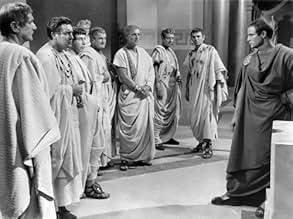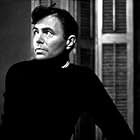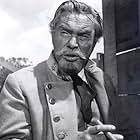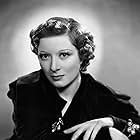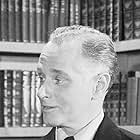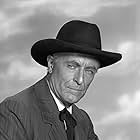The growing ambition of Julius Caesar is a source of major concern to his close friend Brutus. Cassius persuades him to participate in his plot to assassinate Caesar but they have both sorel... Read allThe growing ambition of Julius Caesar is a source of major concern to his close friend Brutus. Cassius persuades him to participate in his plot to assassinate Caesar but they have both sorely underestimated Mark Antony.The growing ambition of Julius Caesar is a source of major concern to his close friend Brutus. Cassius persuades him to participate in his plot to assassinate Caesar but they have both sorely underestimated Mark Antony.
- Won 1 Oscar
- 7 wins & 7 nominations total
- Servant to Antony
- (as Bill Phipps)
- Director
- Writers
- All cast & crew
- Production, box office & more at IMDbPro
Storyline
Did you know
- TriviaThis movie was shot in just 35 days, using some of the sets from Quo Vadis (1951), which were dismantled, flown from Rome to Hollywood, and then reassembled for this film. Producer John Houseman confirmed that it was never intended that the movie be shot in color, as he and director Joseph L. Mankiewicz wanted it to have the urgency of a newsreel, not to look like a costume epic.
- GoofsA well-known bust of Emperor Hadrian is visible during the early dialog between Cassius and Brutus, and, later, at Brutus's villa. Hadrian wouldn't be Emperor for more than 120 years.
- Quotes
Marc Antony: You gentle Romans. Gentle Romans, hear me. Friends, Romans, countrymen, lend me your ears! I come to *bury* Caesar, not to praise him. The evil that men do lives after them, The good is oft interred with their bones; So let it be with Caesar.
- Alternate versionsAlso shown in a computer colorized version.
- ConnectionsFeatured in Precious Images (1986)
But Mankiewicz understood that Shakespeare was both universal and timeless, and in his capacity of director and (uncredited) screenwriter, he 'opened up' JULIUS CAESAR, eliminating the 'studio' feel of key scenes, and, with producer John Houseman, gathered together an impressive array of talent, with British actors John Gielgud as Cassius, James Mason as Brutus, Greer Garson as Calpurnia, and Deborah Kerr as Portia, and stage-trained American actors such as Oscar winner Edmond O'Brien in supporting roles.
Where the greatest gamble, and payoff, came was in the casting of Marlon Brando as Marc Antony. While Brando was already being hailed as the finest American actor of his generation, there were critics, prior to the film's release, who called his acceptance of the role an ego trip, and expected him to fall on his face. Were they ever WRONG! Brando gave the role a power, a physicality, and charisma that stunned critics and audiences alike. With a flawless British accent, he easily held his own with the veteran cast, and displayed a magnetism that is still enthralling, over 50 years later. His performance became the keystone of the film's success.
Not that JULIUS CAESAR is without faults; it is, occasionally, stagy and artificial, the pacing is a bit too slow and deliberate at times, and, as the title character, Louis Calhern is woefully miscast (he looks and sounds more like a jaded grandfather than the charismatic despot who both enthralled and frightened the Roman world). Still, the film is so strong and dynamic that subsequent versions (such as Charlton Heston's ambitious 1970 production) pale in comparison.
Hollywood finally got it 'right', and we can be grateful that a truly unforgettable presentation of JULIUS CAESAR is available for us, and future generations, to enjoy!
- How long is Julius Caesar?Powered by Alexa
Details
- Release date
- Country of origin
- Language
- Also known as
- Jules César
- Filming locations
- Production company
- See more company credits at IMDbPro
Box office
- Budget
- $2,070,000 (estimated)
- Gross worldwide
- $10,831
- Runtime2 hours
- Color
- Sound mix
- Mono(Western Electric Sound System, original release)
- Aspect ratio
- 1.37 : 1
Contribute to this page







